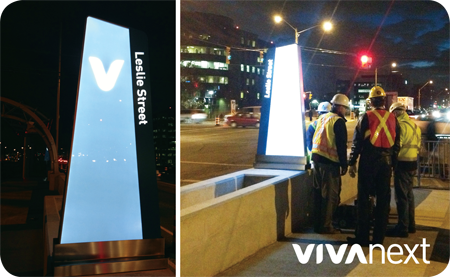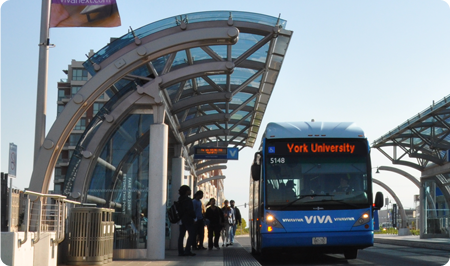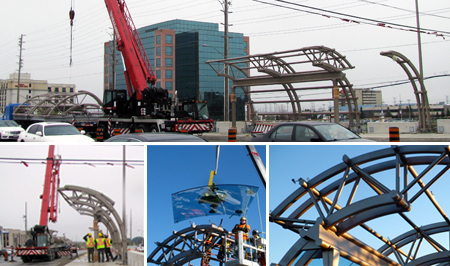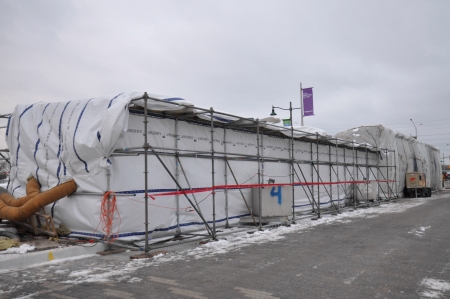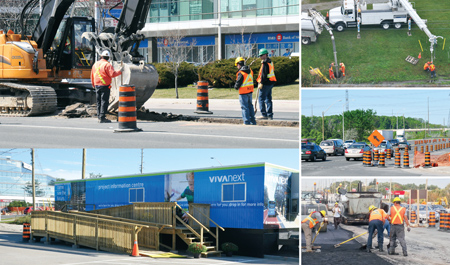It’s the dark days of winter, and our crews are truly lighting up Highway 7 in Richmond Hill. They’re trying out the lighting installed at our new vivastations between Bayview and Highway 404, and it’s an exciting sign that rapidways are well and truly on the way to Highway 7.
Energy-efficient throughout and functional in all weather, these lighting systems are designed to make it easy to identify each station, and are an important safety feature for passengers waiting. Lighting also helps drivers to clearly see the rapidway in the middle of the road.
It’s not all about the bright lights though. Vivastations are being built with reflective, tinted glass curved panels that arch overhead to keep snow and rain off. A glass-enclosed area in the middle of each station has motion-activated heaters, and the raised platform eliminates the need to climb or lift objects up onto a viva vehicle. Technology includes security surveillance and intercom on the platform, and arrival/departure screens with real-time scheduling information.
We already have the first example of a vivastation built in Markham, south of Highway 7 on Warden, so the best way to experience a vivastation is to hop on and off at one. Vivastations will follow a consistent design, but station platforms will be located on different sides of the intersection in some cases. At Bayview Avenue, the vivastation platforms will be curbside, with unique towers alongside that have stairs and elevators leading to Bayview Avenue.
As the days get longer with more sunshine in spring and summer, we’ll start to see the gleaming glass of vivastations along Highway 7. By next winter, vivastation lights will be on, and Highway 7 will be a brighter place for everyone.

